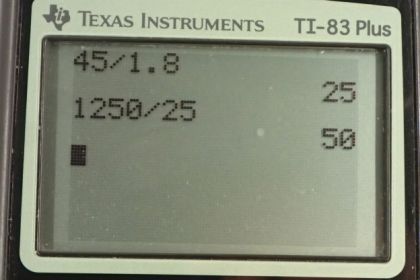Question
What is the mechanical advantage of a nail puller—similar to the one shown in Figure 9.22 —where you exert a force 45 cm from the pivot and the nail is 1.8 cm on the other side? What minimum force must you exert to apply a force of 1250 N to the nail?
Final Answer
Solution video
OpenStax College Physics, Chapter 9, Problem 19 (Problems & Exercises)

vote with a rating of
votes with an average rating of
.
Calculator Screenshots
Video Transcript
This is College Physics Answers with Shaun Dychko. The input lever arm has a distance from the pivot to the input force, perpendicular distance anyhow, and that's given to be 45 centimeters. The output lever arm we're told is 1.8 centimeters. Just before the nail starts to move or just at that equilibrium point we have that the torque due to the output force here is equal to the input torque, and mechanical advantage is the ratio of the output force divided by the input force which when we rearrange this formula, and we have F o over F i, we can see that it equals l i over l o. So that's the input lever arms of 45 centimeters divided by the output lever arm of 1.8 centimeters which is 25. So the mechanical advantage is 25. Then it asks what minimum force would be required for the input force, given that the force on the nail which is the output force, has to be 1250 newtons. So we can rearrange this to solve for F i and it's F o over m a. So that's 1250 over 25 which is 50 newtons.
